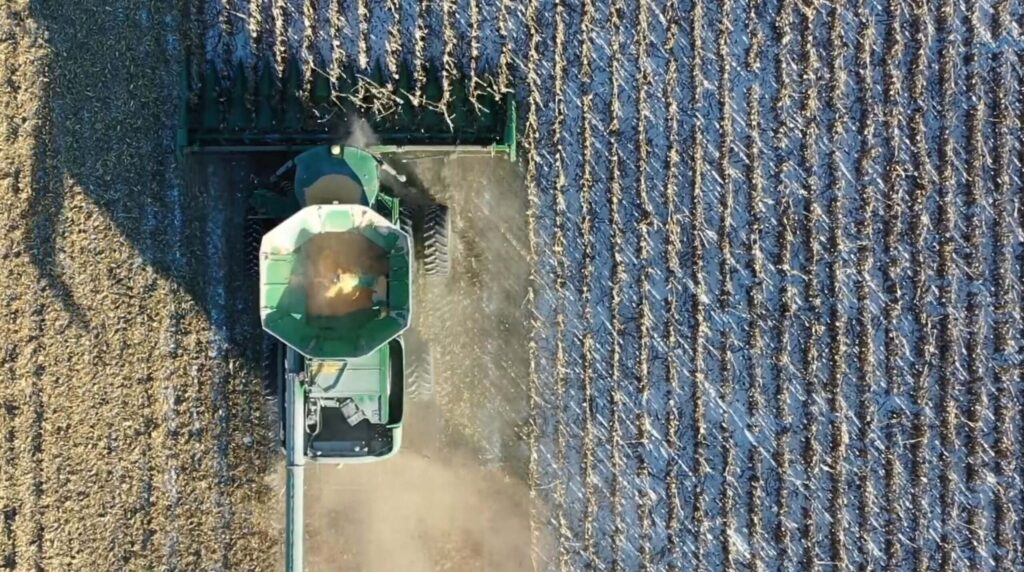Reviewer
Gustavo Stevanin de Souza, Graduate Student, and Dr. Scott Downey, Director and Professor, Purdue University
Article
The economics of farming expansion in the Brazilian Cerrado under possible effects of climate change by Henrique Monaco, Carlos Ortiz, Lilian Caetano, Christoph Müller, and Jonas Jägermeyr
Source
Monaco, H., Ortiz, C., Caetano, L., Müller, C., & Jägermeyr, J. (2024). The economics of farming expansion in the Brazilian Cerrado under possible effects of climate change. International Food and Agribusiness Management Review, 27(3), 441-462. https://doi.org/10.22434/ifamr1028
Summary
This paper provides a detailed analysis of the financial and environmental implications of expanding agriculture into a Brazilian natural vegetation biome. It focuses specifically on deforestation for soy and maize farming and assesses whether such expansion would yield positive economic returns under potential climate change scenarios. The study explores the dynamics between economic viability and environmental preservation, underlining that while agricultural expansion could drive economic growth in certain scenarios, it also poses significant climate and ecological risks that would result in undermining profits for farmers.
The Cerrado, is a Brazilian biome located in the country’s central and midwestern region, that has seen rapid agricultural expansion, driven by favorable conditions such as deep soils and flat terrain, which support large-scale farming, especially for soybeans. The economic appeal of converting natural land into cropland is linked to global demand for grains and oilseeds, used for animal feed and biofuels. However, the conversion of native vegetation has also led to detrimental environmental impacts, including soil degradation, shortened rainy seasons and more erratic precipitation, which further threatens agricultural productivity.
The study aimed to quantify the economic feasibility of converting native vegetation into cropland, correlating it to the potential climate impacts it would have on the farming activity itself. This impact (shorter rainy seasons and soil degradation) could lead to certain micro-regions suffering from substantial economic risks, resulting from volatile or declining yields.
The authors utilized a multi-model approach, including climatic and yield scenarios, and also taking a wide array of factors in consideration when creating such models to make the simulations as realistic as possible in relation to the environmental and productivity impacts. The analysis included: climate variables: minimum, maximum and average temperatures, average rainfall, growing seasons, atmosphere carbon concentration, yields (real and model generated), crop biology, phenology and photosynthesis.
The simulations were run in a scenario where two crops were grown annually, a typical farming strategy in the region of Cerrado, where most farmers plant soybeans early in the summer and corn later in the summer.
For the financial part of the study, researchers used an economic model to calculate the Net Present Value (NPV) of the cash flow from investing in corn and soybeans on a cleared native vegetation area for 30 years. The simulation was estimated for a 10,000-hectare farm, cleared in 5 years at a rate of 20% per year (2000 ha land cleared/year).
This calculation included machinery costs and depreciation, clearing costs to convert native vegetation into cropland and regular costs for crop production (seeds, chemicals and others).
In the end, researchers created possible scenarios of outcomes, based on 3 Global Climate Models (GCMs) and 2 combinations of Shared Socioeconomic Pathways (SSPs) and Representative Concentration Pathway (RCP), in other words, the final possible outcomes have resulted from a combination of 3 climate scenarios (slightly sensitive, regularly sensitive and highly sensitive) and 2 economic scenarios (conservative and aggressive).
The findings indicate that farming expansion into the native vegetation is economically risky, and results can be very volatile over the years, with profitability heavily influenced by climate variability. The charts below represent the yield predictions from the year 2025 until 2060 for soybeans (top) and corn (bottom), each line is a different climate model (3 GCMs) and RCPs 2.6 and 8.5 are the combinations of economic scenarios with carbon concentrations, with 2.6 being the more conservative and 8.5 the more aggressive.
As shown on the left charts (RCP 2.6, conservative), the 3 possible yield scenarios for soybeans will either result in slightly increased gains or a sharp decrease. For corn, the predictions are even more pessimistic. The same happens on the other scenario of RCP 8.5 where carbon concentrations would be higher and the economic path even more aggressive, where we see even sharper falls in yield predictions.
Overall, depending on the chosen combinations of economic scenarios and climate models, there are cases in which we have slightly increased yields, but most of them lead to a decrease in crop performance.
For a deeper analysis, the researchers also provided the table below in which we have 6 possible NPV scenarios (combinations of 2 RCPs and 3 GCMs) for each of the 10 states that occupy the Cerrado region (Bahia, BA; Distrito Federal (DF), Goiás (GO), Maranhão (MA), Minas Gerais (MG), Mato Grosso do Sul (MS), Mato Grosso (MT), Piauí (PI), São Paulo (SP), Tocantins (TO)). Negative values are represented in between parentheses.
For the conservative scenario (RCP 2.6), 30% of the economic outcomes were negative and for the more aggressive scenario (RCP 8.5), 60% of the economic outcomes were negative. The results clearly varied by state, when looking at the state of Goiás (GO), there were no negative outcomes, while for the states of São Paulo (SP) and Tocantins (TO) all results were negative.
Under the combination of the aggressive RCP 8.5 with the most sensitive climate model (UKESM10-LL), bottom line, 90% of the analyzed land shows a negative NPV, indicating that investments in these cases would lead to almost certain financial losses. Specifically, the state of Tocantins (TO), the biggest recorded loss.
In certain micro-regions, however, the models suggest that crop expansion could yield positive returns, though these cases are limited and localized. The study notes that while soybeans and maize remain staple crops, more economically resilient crop mixes or alternative land uses could offer higher profitability in the long term. However, without adaptive measures, the high likelihood of reduced yields under climate change makes the economic feasibility of converting native vegetation increasingly uncertain.
What does this mean for food and agricultural business?
The paper highlights that deforestation could exacerbate adverse weather patterns, creating a negative feedback loop that would further hinder agricultural productivity. For instance, shortened rainy seasons and heightened temperatures could increasingly disrupt double-cropping systems, making it difficult for farmers to achieve stable annual revenues.
Alongside that, deforestation reduces biodiversity, undermines ecosystem services, and contributes to climate change. These potential negative impacts underline the importance of sustainable practices and policy intervention.
The authors argue that farmers, policymakers, and financial institutions should consider these economic and ecological risks before endorsing or financing large-scale agricultural conversion. They suggest that rather than clearing new land, agricultural productivity must be intensified on existing farmland through technological advancements and sustainable practices.
Aside from this, biodiversity is essential for pest management and disease control, as a diverse environment allows a wider array of species to coexist preventing major pest infestations, rapid development of diseases and provides raw material for new agricultural discoveries in the integrated pest management development field.
Additionally, the study suggests that policy measures to protect native vegetation may help mitigate these risks. By preserving areas with high environmental value, Brazil could maintain essential ecosystem services like water regulation and carbon storage. The authors argue that investments in non-agricultural industries or alternative forms of agriculture, such as agroforestry, might offer a more sustainable development pathway for regions where agricultural expansion is economically and environmentally unfeasible.
In conclusion, even though the article is focused on a Brazilian site, the findings may be applicable for other environmentally sensitive regions around the world, demonstrating that expanding agriculture into native vegetation involves significant financial risks. The authors warn that continued deforestation for agriculture could lead to long-term economic and environmental challenges, reinforcing the need for balanced development policies that consider both profitability and ecological sustainability. Policymakers, financial backers, and agricultural stakeholders are urged to weigh the financial viability of land-clearing investments carefully and to explore sustainable alternatives that would preserve environmental integrity while supporting economic growth.







